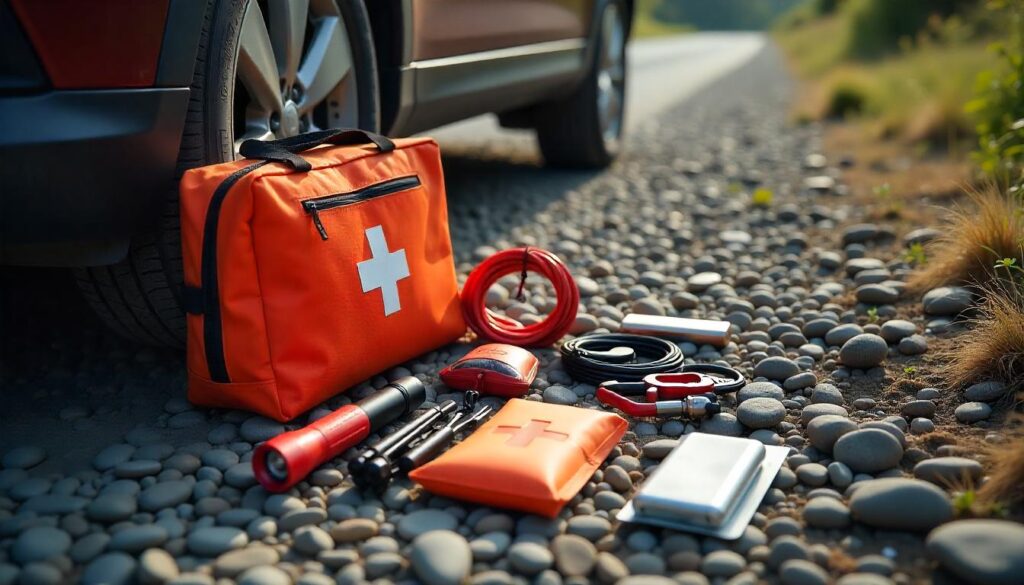Nepal’s monsoon season, typically lasting from June to September, brings torrential rainfall, flooded roads, and extreme humidity that can wreak havoc on vehicles—especially older models with aging components and potential vulnerabilities. The combination of water exposure, reduced visibility, and deteriorating road conditions creates a perfect storm of challenges for vehicle owners.
This comprehensive guide will help you prepare your older vehicle to withstand Nepal’s monsoon months, protecting your investment and ensuring safe travel during this challenging season.
Understanding Monsoon Threats to Vehicles in Nepal
Nepal’s monsoon season brings unique challenges beyond just rain:
- Extreme Rainfall: Downpours can exceed 600mm in a single month in some regions
- Flash Flooding: Particularly dangerous on mountain roads and in low-lying urban areas
- Humidity Levels: Often exceeding 85% for extended periods, accelerating corrosion
- Road Deterioration: Rapid formation of potholes and washouts
- Reduced Visibility: Heavy rain combined with inadequate vehicle lighting
- Electrical System Stress: Increased moisture exposure to vulnerable components
- Urban Drainage Issues: Many roads in Kathmandu and other cities experience significant flooding due to overwhelmed drainage systems

Pre-Monsoon Inspection Checklist
Conduct a thorough inspection at least two weeks before the expected start of monsoon season:
1. Exterior Waterproofing
Body Seals and Weatherstripping:
- Inspect door seals and weatherstripping for cracks, hardening, or deformation
- Check trunk and hood seals for proper compression
- Apply silicone lubricant to rubber seals to restore flexibility and improve sealing
- Replace damaged weatherstripping—don’t attempt to repair significantly deteriorated seals
Sunroof and Window Seals (if applicable):
- Test sunroof drainage channels by pouring small amounts of water while watching for proper drainage
- Check window seals by running a hose at low pressure around each window
- Apply rubber protectant to all seals to prevent cracking
Body Penetrations:
- Inspect antenna grommets, wiring pass-throughs, and other body penetrations
- Apply silicone sealant to suspicious areas that might allow water entry
- Check factory drain holes in doors and body panels to ensure they’re clear of debris
2. Electrical System Preparation
Properly protected battery terminals are essential for monsoon reliability
Battery Protection:
- Clean battery terminals and apply terminal protectant spray
- Check battery mounting to ensure it’s secure and protected from water splash
- Consider applying petroleum jelly to terminals for added moisture protection
- Verify battery vent tubes are properly routed away from electrical components
Wiring Harness Protection:
- Inspect wiring harnesses for cracked insulation or exposed wires
- Apply dielectric grease to all accessible electrical connections
- Secure any loose wiring that might be exposed to water splash
- Pay special attention to headlight, taillight, and underbody wiring
Fuse Box and Electrical Modules:
- Check fuse box seals for deterioration
- Consider applying silicone water repellent around the edges of the fuse box cover
- Inspect computer module housings for proper sealing (often located under seats or in the trunk)
3. Undercarriage Protection
Rust Prevention:
- Thoroughly wash the undercarriage to remove accumulated dirt and debris
- Apply rust inhibitor to exposed metal components, particularly around suspension mounting points
- Consider professional undercoating if significant rust is already present
- Pay special attention to frame rails, floor pans, and suspension components
Drain Plugs and Access Holes:
- Locate and clean body drain holes to ensure proper water drainage
- Check floor drain plugs (if equipped) for proper sealing
- Ensure jack points and other access holes have intact rubber plugs
4. Engine Bay Preparation
Water Entry Points:
- Inspect air intake system for potential water entry points
- Consider a snorkel extension for vehicles frequently driven through deep water
- Ensure hood seals are intact to prevent water spray from entering the engine bay
Electrical Component Protection:
- Apply dielectric grease to exposed connectors
- Check alternator and starter motor for signs of previous water exposure
- Consider water-resistant covers for sensitive electronics if vehicle has history of water exposure
Belts and Hoses:
- Inspect all belts for cracks or signs of deterioration
- Check hose clamps for tightness and corrosion
- Replace any marginal components; hoses are particularly vulnerable to failure during monsoon
5. Essential Systems Check
Heavy-duty monsoon wiper blades significantly improve visibility during heavy rainfall
Windshield Wipers:
- Replace wiper blades with heavy-duty monsoon-specific wipers if available
- Check wiper motor operation and speed settings
- Ensure washer fluid reservoir is full and nozzles are properly aligned
- Consider applying water repellent treatment to all windows
Lighting Systems:
- Test all exterior lights (headlights, fog lights, tail lights, indicators)
- Clean light lenses and replace any that are significantly fogged or cracked
- Check for water ingress in light housings
- Consider upgrading to brighter bulbs for improved visibility during heavy rain
Braking System:
- Inspect brake lines for corrosion or damage
- Test brake performance for even application
- Consider replacing brake fluid if it hasn’t been changed within two years
- Check ABS sensors (if equipped) for proper operation

Monsoon-Specific Upgrades for Older Vehicles
Consider these upgrades for vehicles that are 7+ years old:
Older vehicles are particularly vulnerable during monsoon season. These targeted upgrades can significantly improve reliability and safety during heavy rain conditions.
1. Enhanced Visibility Systems
Lighting Upgrades:
- Add auxiliary fog lights if not equipped
- Upgrade to higher-performance headlight bulbs
- Install LED tail lights for better visibility in heavy rain
- Consider LED light bars for rural driving if legal in your area
Visibility Aids:
- Apply anti-fog treatment to interior glass surfaces
- Install a rear window defroster if not equipped
- Consider side window rain deflectors to allow partial window opening during rain
2. Water Protection Upgrades
Snorkel Air Intake:
- For vehicles frequently crossing flooded areas, a snorkel air intake system raises the air intake point
- Particularly useful for diesel engines which can suffer catastrophic damage from water ingestion
Electrical System Waterproofing:
- Silicone conformal coating spray for exposed circuit boards
- Waterproof fuse box covers
- Relocating vulnerable electrical components to higher mounting positions
Body Sealing:
- Apply automotive-grade silicone sealant to problematic body seams
- Install additional rubber flaps behind wheels to reduce water spray
- Consider tailored vehicle rain covers for overnight parking in exposed areas
3. Traction Improvements
Tire Upgrades:
- Consider tires with aggressive tread patterns designed for wet conditions
- Ensure tread depth exceeds 4mm on all tires
- Maintain proper inflation—check pressure weekly during monsoon
Traction Aids:
- Carry traction mats for emergency situations
- Consider limited-slip differential upgrades for rear-wheel drive vehicles
- Add weight in the trunk of rear-wheel drive vehicles for improved traction
Daily Maintenance During Monsoon
1. Regular Inspections
Daily Checks:
- Inspect wiper blades for damage after each use in heavy rain
- Check headlights and tail lights for proper operation
- Look for water accumulation in the cabin and trunk
- Verify that all windows are fully closed before parking
Weekly Maintenance:
- Clean and dry floor mats to prevent mold growth
- Verify proper operation of all electrical systems
- Check for water in unusual places (glove box, door pockets)
- Inspect engine bay for signs of water entry
2. Driving Techniques
Safety Warning:
Never attempt to drive through visibly deep water. Just 30cm of flowing water can carry away most passenger vehicles.
Water Crossing Safety:
- Never drive through water of unknown depth
- Maintain steady speed when driving through unavoidable water
- Avoid following closely behind other vehicles in flooded areas
- Test brakes immediately after water crossing by applying light pressure
Night Driving Precautions:
- Reduce speed significantly as visibility decreases
- Use fog lights when appropriate, but avoid high beams in heavy rain
- Increase following distance to account for longer stopping distances
- Watch for pedestrians and animals that may be difficult to see in the rain
Special Considerations for Older Vehicles
Older vehicles often have unique vulnerabilities during monsoon season. Here are some specific considerations:
1. Rust and Corrosion
- Inspect all body panels for rust, particularly around wheel wells and undercarriage
- Apply rust converter to any small areas of surface rust
- Consider professional rustproofing if significant corrosion is present
2. Electrical System Vulnerabilities
- Older wiring harnesses may be more susceptible to water damage
- Consider replacing vulnerable connectors with waterproof versions
- Inspect all electrical components for signs of corrosion or damage
3. Suspension and Steering Components
- Check for play in suspension components, particularly ball joints and tie rods
- Inspect shock absorbers for leaks or damage
- Consider upgrading to heavy-duty components if vehicle is frequently used off-road
4. Brake System
- Inspect brake lines for corrosion, particularly on older vehicles
- Consider upgrading to stainless steel brake lines for improved durability
- Check brake pads and rotors for wear, particularly if vehicle has been exposed to water
- Consider upgrading to high-performance brake pads for improved stopping power
5. Engine and Transmission
- Inspect engine and transmission mounts for wear or damage
- Check for leaks in engine and transmission seals
- Consider upgrading to a high-performance air filter for improved airflow
- Inspect all hoses and belts for wear or damage
- Consider upgrading to a high-performance radiator for improved cooling
- Check for leaks in the cooling system, particularly around the radiator and water pump
- Consider upgrading to a high-performance water pump for improved cooling
- Inspect all hoses and clamps for wear or damage
- Consider upgrading to a high-performance thermostat for improved cooling
- Check for leaks in the fuel system, particularly around the fuel tank and fuel lines
- Consider upgrading to a high-performance fuel pump for improved fuel delivery
Emergency Supplies for Monsoon Travel
Always carry an emergency kit in your vehicle during monsoon season. Here are some essential items to include:
- First aid kit
- Flashlight with extra batteries
- Non-perishable food and water
- Blanket or sleeping bag
- Basic tool kit
- Road flares or reflective triangles
- Tire inflator and sealant
- Portable phone charger
- Rain poncho or waterproof jacket

Post-Monsoon Maintenance
After the monsoon season, conduct a thorough inspection of your vehicle:
- Inspect for rust and corrosion, particularly in vulnerable areas
- Check all electrical connections for signs of water damage
- Inspect tires for wear and replace if necessary
- Flush and replace brake fluid if it has absorbed moisture
- Consider a professional detailing service to remove any remaining contaminants
A thorough wash and inspection after monsoon season is essential for vehicle longevity
Conclusion
Preparing your vehicle for Nepal’s monsoon season is essential for ensuring safety and reliability. By following this comprehensive guide, you can protect your investment and navigate the challenges of monsoon driving with confidence.




